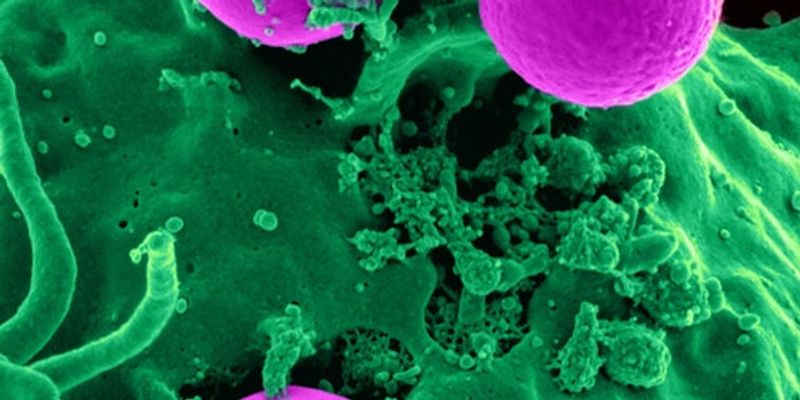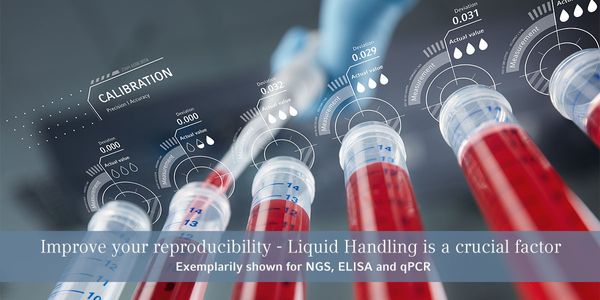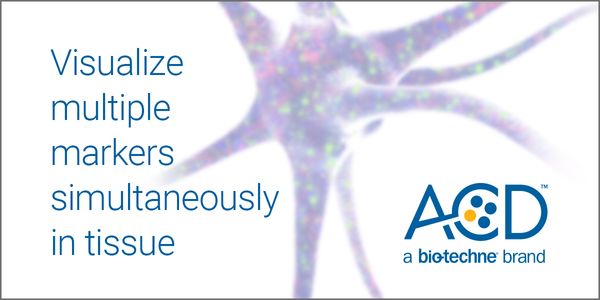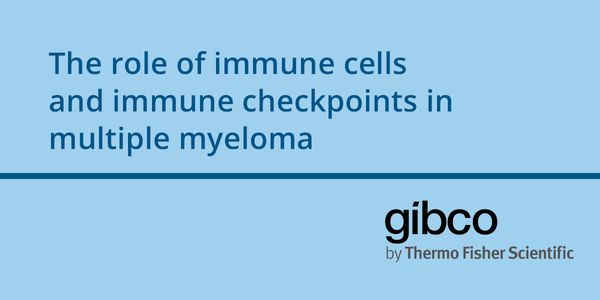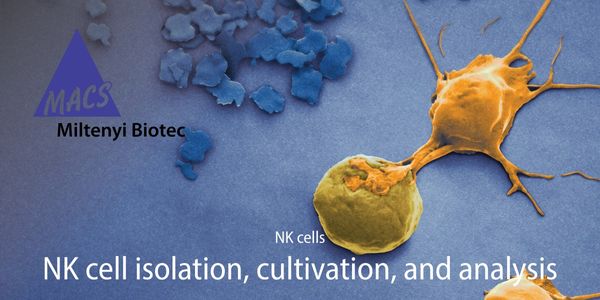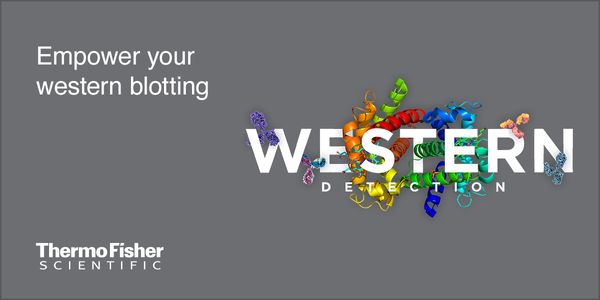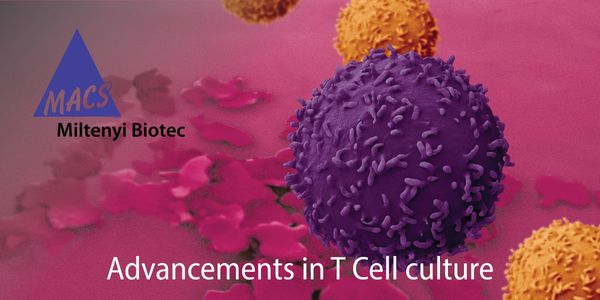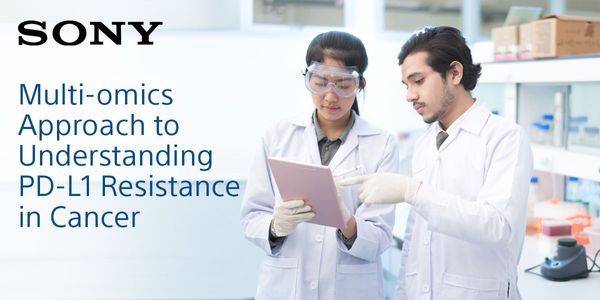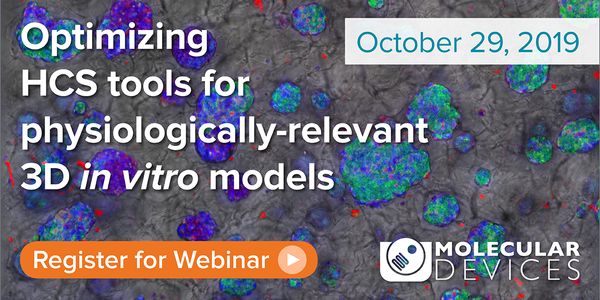Cell
Cell: is the smallest structural and functional unit of an organism, typically microscopic and consisting of cytoplasm and a nucleus enclosed in a membrane. Microscopic organisms typically consist of a single cell, which is either eukaryotic or prokaryotic.
-
DEC 10, 2019 | 7:00 AMDATE: December 11, 2019 TIME: 7:00am PST, 10:00am EST Rapid growth in the cell and gene therapy industry has generated an urgent need for robust analytics around characterization of both vec...DEC 05, 2019 | 9:00 AMDATE: December 5, 2019TIME: 9:00am PST, 12:00pm EST Characterization of the spatial distribution and abundance of proteins and mRNAs with morphological context within tissues e...Speaker: Mathias Holpert, PhD , Traci DeGeer, BS, HT (ASCP) HTL, QIHCSponsored By: Leica Biosystems, NanoString TechnologiesDEC 04, 2019 | 9:00 AMDATE: December 4, 2019 TIME: 9:00am PST, 12:00pm EST Targeted protein degradation is a novel chemical modality centered on using pharmacological agents to immediately and select...DEC 04, 2019 | 7:00 AMDATE: December 4, 2019TIME: 7:00am PST, 10:00am EST, 4:00pm CET Do you know how it feels when you just quickly want to redo an experiment that your colleague did, or an experim...DEC 03, 2019 | 9:00 AMDATE: December 3, 2019 TIME: 9:00am PST Microglia are the brain's resident immune cells and play key roles in normal development, maintenance of homeostasis, and disease. Using a combina...NOV 25, 2019 | 9:00 AMFECHA: 25 Noviembre 2019 TIEMPO: 12:00PM UTC-5, 9:00AM PST Hoy en día, los analizadores de hematología pueden recopilar grandes cantidades de datos acerca de las caracter&...NOV 21, 2019 | 9:00 AMDATE: November 21, 2019TIME: 9:00am PST, 12:00pm EST Multiple Myeloma is a disease of terminally differentiated plasma cells with the massive production of monoclonal immunoglobu...NOV 19, 2019 | 10:00 AMDATE: November 19, 2019TIME: 10:00am PSTMicroglial cells are the resident innate immune cells of the central nervous system (CNS) and are responsible for regulating inflammatory activati...NOV 18, 2019 | 7:00 AMDATE: November 18, 2019TIME: 7:00am PST, 11:00am EST, 4:00pm CEWT How often do you pipette in your cell culture lab every day? Usually, we do it so often that we tend stop th...NOV 15, 2019 | 8:00 AMDATE: November 15, 2019TIME: 8:00am PST, 11:00am EST Exosomes are small vesicles, ranging from 30-120 nanometers in diameter, secreted from cells throughout the human body. The...Facioscapulohumeral muscular dystrophy (FSHD), one of the most common forms of progressive muscular dystrophies and is often conventionally diagnosed by Southern blot analysis. The accurate d...Speaker: Alka Chaubey, PhD, FACMG
NOV 13, 2019 | 12:00 PM
DATE: November 13, 2019TIME: 12:00pm PT NK cells play a major role in immune surveillance and in the early immune response to cancer and infections. Beneficial anti-tumor respo...
NOV 13, 2019 | 8:00 AM
DATE: November 13, 2019TIME: 8:00am PSTIn this presentation, Dr. Rizvi will outline the power and generality of single-cell studies, workflows enabling such studies, and skillful mean...
NOV 12, 2019 | 10:00 AM
DATE: November 12, 2019TIME: 10:00am PSTDirect measurement of copy number by droplet-based shallow sequencing of genomic DNA has the potential to provide new insights into tumor heterog...
NOV 07, 2019 | 10:00 AM
DATE: November 7, 2019TIME: 10:00am PST, 1:00pm EST Studying the pathogenesis of diabetes requires detailed analysis of the pancreatic islet microenvironment and its numerous c...
NOV 07, 2019 | 9:00 AM
DATE: November 7, 2019 TIME: 9:00am PST, 12:00pm EST In collaboration with Hematherix and Thermo Fisher, Dr. Laurent Mosnier is investigating a new treatment for acute traumatic bl...
Influenza viruses are transmitted by membrane-bound virus particles, or virions. Unlike some viruses, which produce near-identical virions from a well-defined set of viral components, influen...
NOV 05, 2019 | 9:00 AM
DATE: November 5, 2019TIME: 9:00am PT, 12:00pm ET New results have highlighted the advantages of minicircles over plasmids as they avoid unnecessary bacterial backbone sequences...
NOV 05, 2019 | 7:00 AM
DATE: November 5, 2019 TIME: 7:00am PST, 9:00am CSTDetection of low-abundance proteins and/or detection of proteins from precious samples can be a major challenge when performing wes...
OCT 31, 2019 | 9:00 AM
DATE: October 31, 2019TIME: 9:00am PDT, 12:00pm EDT INTRODUCTION: A major limitation for the development of 3D engineered tissues is the absence of viable and perfusable...
OCT 30, 2019 | 10:00 AM
DATE: October 30, 2019 TIME: 10:00am PDTNew to T cell applications or just want a refresher on best practices? Miltenyi Biotec offers a large range of T cell culture products to optimiz...
OCT 30, 2019 | 7:00 AM
DATE: October 30, 2019TIME: 7:00am PDTJoin us for a webinar to learn how to apply single cell methods to study cancer. Dr. William Greenleaf, Associate Professor from Stanford Universit...
OCT 29, 2019 | 8:00 AM
DATE: October 29, 2019TIME: 8:00am PDTAlthough immune-based therapies targeting the inhibitory receptors (PD-L1, PD1, and CTLA4) are proven to be effective to treat cancer, some pati...
OCT 29, 2019 | 7:00 AM
DATE: October 29, 2019TIME: 7:00am PDT3D cell culture systems have recently emerged as tools for reproducing the cellular environment and the organization of tissues/organs, where cel...
DEC 10, 2019 | 7:00 AM
DATE: December 11, 2019 TIME: 7:00am PST, 10:00am EST Rapid growth in the cell and gene therapy industry has generated an urgent need for robust analytics around characterization of both vec...
DEC 05, 2019 | 9:00 AM
DATE: December 5, 2019TIME: 9:00am PST, 12:00pm EST Characterization of the spatial distribution and abundance of proteins and mRNAs with morphological context within tissues e...
Speaker:
Mathias Holpert, PhD
, Traci DeGeer, BS, HT (ASCP) HTL, QIHC
Sponsored By: Leica Biosystems,
NanoString Technologies
DEC 04, 2019 | 9:00 AM
DATE: December 4, 2019 TIME: 9:00am PST, 12:00pm EST Targeted protein degradation is a novel chemical modality centered on using pharmacological agents to immediately and select...
DEC 04, 2019 | 7:00 AM
DATE: December 4, 2019TIME: 7:00am PST, 10:00am EST, 4:00pm CET Do you know how it feels when you just quickly want to redo an experiment that your colleague did, or an experim...
DEC 03, 2019 | 9:00 AM
DATE: December 3, 2019 TIME: 9:00am PST Microglia are the brain's resident immune cells and play key roles in normal development, maintenance of homeostasis, and disease. Using a combina...
NOV 25, 2019 | 9:00 AM
FECHA: 25 Noviembre 2019 TIEMPO: 12:00PM UTC-5, 9:00AM PST Hoy en día, los analizadores de hematología pueden recopilar grandes cantidades de datos acerca de las caracter&...
NOV 21, 2019 | 9:00 AM
DATE: November 21, 2019TIME: 9:00am PST, 12:00pm EST Multiple Myeloma is a disease of terminally differentiated plasma cells with the massive production of monoclonal immunoglobu...
NOV 19, 2019 | 10:00 AM
DATE: November 19, 2019TIME: 10:00am PSTMicroglial cells are the resident innate immune cells of the central nervous system (CNS) and are responsible for regulating inflammatory activati...
NOV 18, 2019 | 7:00 AM
DATE: November 18, 2019TIME: 7:00am PST, 11:00am EST, 4:00pm CEWT How often do you pipette in your cell culture lab every day? Usually, we do it so often that we tend stop th...
NOV 15, 2019 | 8:00 AM
DATE: November 15, 2019TIME: 8:00am PST, 11:00am EST Exosomes are small vesicles, ranging from 30-120 nanometers in diameter, secreted from cells throughout the human body. The...
Facioscapulohumeral muscular dystrophy (FSHD), one of the most common forms of progressive muscular dystrophies and is often conventionally diagnosed by Southern blot analysis. The accurate d...
Speaker:
Alka Chaubey, PhD, FACMG
NOV 13, 2019 | 12:00 PM
DATE: November 13, 2019TIME: 12:00pm PT NK cells play a major role in immune surveillance and in the early immune response to cancer and infections. Beneficial anti-tumor respo...
NOV 13, 2019 | 8:00 AM
DATE: November 13, 2019TIME: 8:00am PSTIn this presentation, Dr. Rizvi will outline the power and generality of single-cell studies, workflows enabling such studies, and skillful mean...
NOV 12, 2019 | 10:00 AM
DATE: November 12, 2019TIME: 10:00am PSTDirect measurement of copy number by droplet-based shallow sequencing of genomic DNA has the potential to provide new insights into tumor heterog...
NOV 07, 2019 | 10:00 AM
DATE: November 7, 2019TIME: 10:00am PST, 1:00pm EST Studying the pathogenesis of diabetes requires detailed analysis of the pancreatic islet microenvironment and its numerous c...
NOV 07, 2019 | 9:00 AM
DATE: November 7, 2019 TIME: 9:00am PST, 12:00pm EST In collaboration with Hematherix and Thermo Fisher, Dr. Laurent Mosnier is investigating a new treatment for acute traumatic bl...
Influenza viruses are transmitted by membrane-bound virus particles, or virions. Unlike some viruses, which produce near-identical virions from a well-defined set of viral components, influen...
NOV 05, 2019 | 9:00 AM
DATE: November 5, 2019TIME: 9:00am PT, 12:00pm ET New results have highlighted the advantages of minicircles over plasmids as they avoid unnecessary bacterial backbone sequences...
NOV 05, 2019 | 7:00 AM
DATE: November 5, 2019 TIME: 7:00am PST, 9:00am CSTDetection of low-abundance proteins and/or detection of proteins from precious samples can be a major challenge when performing wes...
OCT 31, 2019 | 9:00 AM
DATE: October 31, 2019TIME: 9:00am PDT, 12:00pm EDT INTRODUCTION: A major limitation for the development of 3D engineered tissues is the absence of viable and perfusable...
OCT 30, 2019 | 10:00 AM
DATE: October 30, 2019 TIME: 10:00am PDTNew to T cell applications or just want a refresher on best practices? Miltenyi Biotec offers a large range of T cell culture products to optimiz...
OCT 30, 2019 | 7:00 AM
DATE: October 30, 2019TIME: 7:00am PDTJoin us for a webinar to learn how to apply single cell methods to study cancer. Dr. William Greenleaf, Associate Professor from Stanford Universit...
OCT 29, 2019 | 8:00 AM
DATE: October 29, 2019TIME: 8:00am PDTAlthough immune-based therapies targeting the inhibitory receptors (PD-L1, PD1, and CTLA4) are proven to be effective to treat cancer, some pati...
OCT 29, 2019 | 7:00 AM
DATE: October 29, 2019TIME: 7:00am PDT3D cell culture systems have recently emerged as tools for reproducing the cellular environment and the organization of tissues/organs, where cel...
